Kimberly strawberry variety
Kimberly is an early non-renovated variety of garden strawberries (strawberries) for table use. It was bred by Dutch specialists by crossing the varieties Gorella and Chandler. Differs in excellent sweet taste of berries with hints of caramel. Along with excellent taste, it has high yield rates, which many other popular varieties cannot boast of. Recommended for outdoor cultivation.
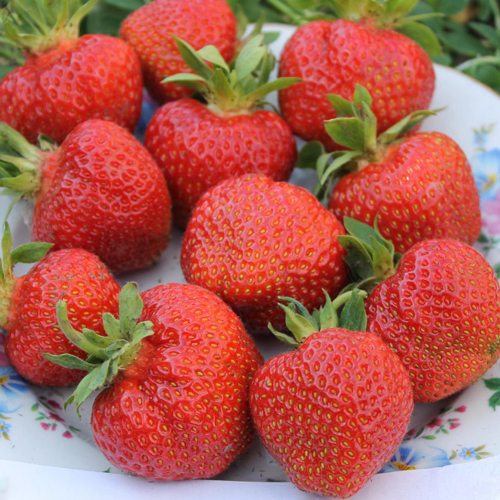
The plant is quite powerful, erect, medium-leafy, at the same time very compact, not very spreading. The leaves are large, light green, rounded, bubbly, ribbed, medium-wrinkled. Petioles are poorly pubescent. Whiskers are of medium length, red, poor formation. The flowers are large, white in color, forming sprawling multi-flowered inflorescences. The flowers are bisexual, so strawberries do not require additional pollination. Peduncles are long, strong, with sparse pubescence, are located at the same level with leaves, perfectly hold berries, are not prone to lodging under their weight.
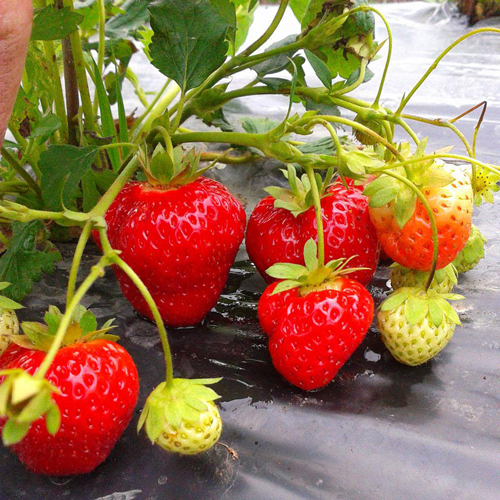
Kimberly berries have a regular conical shape without a neck, often heart-shaped, especially when first picked. The skin is bright orange-red, shiny. At the stage of full maturity, the berries acquire an intense bright red color. The pulp is also red, but slightly lighter, with an orange tint, has a rich aroma. Strawberry tastes great! The tasters rated them 5 points out of 5 possible. The pulp is moderately firm, very juicy, sweet, but not cloying. On the palate, notes of caramel stand out brightly. The aroma of the berries is very intense, often with caramel shades. According to gardeners, Kimberly is really one of the most delicious varieties.
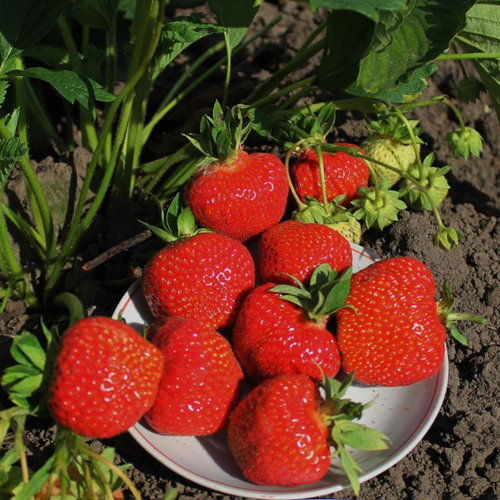
The berries are great fresh but also great for canning. They are separated from the stalk very easily, are not damaged, and remain dry and beautiful. Due to the rather dense pulp, they tolerate transportation and short-term storage well without loss of taste and marketability. Outwardly, the fruits look very attractive, so the variety is very promising for growing in order to sell fresh produce. Also, the berries perfectly tolerate washing, are suitable for storage in frozen form.
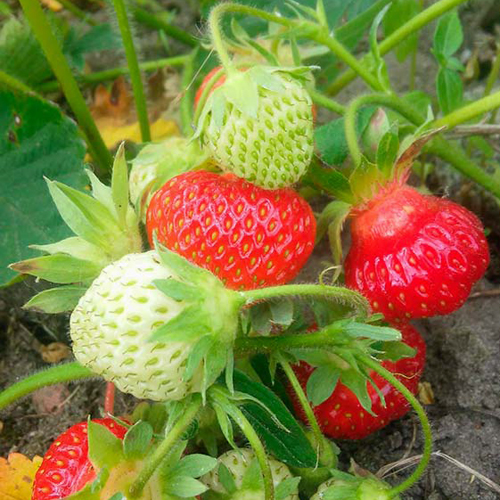
The variety is early, the beginning of fruiting occurs in mid-May - early June, maybe later, depending on the weather conditions of the region and agricultural technology. Strawberries are characterized by stable fruiting, that is, the berry does not shrink after the first harvest. On average, the mass of fruits is about 25−35 grams; specimens weighing 50 grams are often formed. Kimberly has one characteristic feature - the berries ripen for a long time, the unripe fruit has an orange tip. The most delicious berries are completely red in color. According to gardeners, ripening occurs unevenly - the collection is stretched due to the fact that most of the fruits are not yet fully ripe, although visually a large number of red berries are found on the bushes.
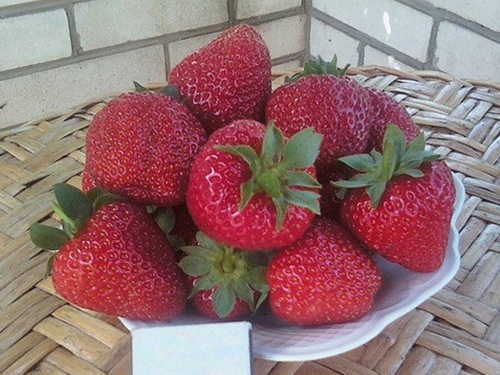
Kimberly has not only great taste, but also very high yields. Many other popular varieties can only envy such a successful combination! One plant per season forms about 1 kg of berries, with good care and competent agricultural technology - up to 2 kg. According to some reports, the total yield can reach 150 c / ha! Thus, with good care and favorable season conditions, our heroine can outstrip even such "giants" of the strawberry market as her beloved in Russia Festivalnaya and famous for the size of its berries Gigantella Maxim... This comparison, of course, is not entirely correct, since these varieties have different ripening times. If we compare with other early and mid-early varieties, for example, with the well-known Honey and gaining popularity Vima Zanta, then we can safely say that Kimberly will give them a head start.Yes, and our heroine's taste surpasses all the listed varieties, however, everyone has different preferences, so it is impossible to talk about this with certainty.
According to gardeners, strawberries are quite resistant to heat, the berries are not baked in the sun, moreover, with an abundant amount of sunlight, the fruits grow larger and sweeter. Plants are moderately sensitive to drought, but it is still better to closely monitor soil moisture. As for the soils themselves, light and medium-sized soils with an acidity level of pH 5-6.5 are preferred. By the way, our heroine is not capable of showing good results on all types of soil, therefore, if your plot has a rather problematic soil that is not suitable for growing strawberries, it is better to choose another variety, more "tenacious", capable of adapting to adverse conditions. Kimberly has good winter hardiness, however, shelter in winters with little snow is highly desirable.
The variety is resistant to common diseases, especially its immunity to powdery mildew. Gardeners also noticed that the plants thrive in rainy seasons, while their disease resistance and quality of berries remain at their best. However, some summer residents noted the susceptibility of the foliage of our heroine to various spots. As for pests, with timely prevention, they will not cause problems.
There are no unusual features in the cultivation of Kimberly, but proper care greatly affects the quantity and quality of the strawberry harvest. Below is a small list of tips to help you find the "keys" to our heroine.
- You need to plant this variety in a sunny place. The soil must be properly prepared before planting. For 1 square meter, you need to add about 5-6 kg of organic fertilizers and up to 40 grams of mineral fertilizers. Then the soil needs to be dug up. Planting is carried out after the soil has settled.
- During flowering and fruit ovary, attention should be paid to feeding plants with mineral complexes. This is a very important point, since the size, quantity and taste of berries depend on the amount of minerals in the soil. It is worth taking care of the organic component of nutrition even before planting seedlings or before the flowering of strawberries.
- By the way, the flowering of plants begins quite early, so in the northern regions it is worth taking care of the planting shelter in order to avoid damage to the flowers by recurrent frosts.
- Kimberly is hygrophilous, regular abundant watering increases yields and improves the taste and size of the berries. But do not get too carried away - excessive waterlogging of the soil will clearly not benefit the plantings.
- If your plans do not include the propagation of strawberries and obtaining seedlings, then you need to pay attention to the timely removal of the mustache. As mentioned above, our heroine's education is very meager, but this does not negate the need to normalize their number. The more the mustache "feeds" the plant, the less nutrition goes to the berries, and, consequently, the yield will be less.
- Rejuvenate the plantation in a timely manner. The variety weakens rather slowly, so the need for rejuvenation appears about 3-5 years of cultivation, depending on the intensity of use.
In conclusion, I would like to say that Kimberly is a very promising strawberry that clearly deserves attention. It is perfect for growing not only in small household plots, but also in the production areas of large agricultural complexes. And this is not just a loud statement - the plants show very good yields, while the taste of the berries is really delicious. In addition, the variety is not too whimsical, does not require the creation of special growing conditions, and the berries perfectly tolerate transportation and have an excellent presentation.The only drawback that complicates commercial cultivation is uncooked ripening, which takes longer to harvest. Otherwise, the variety is very good in all plans and will become one of the most beloved inhabitants of your site!








